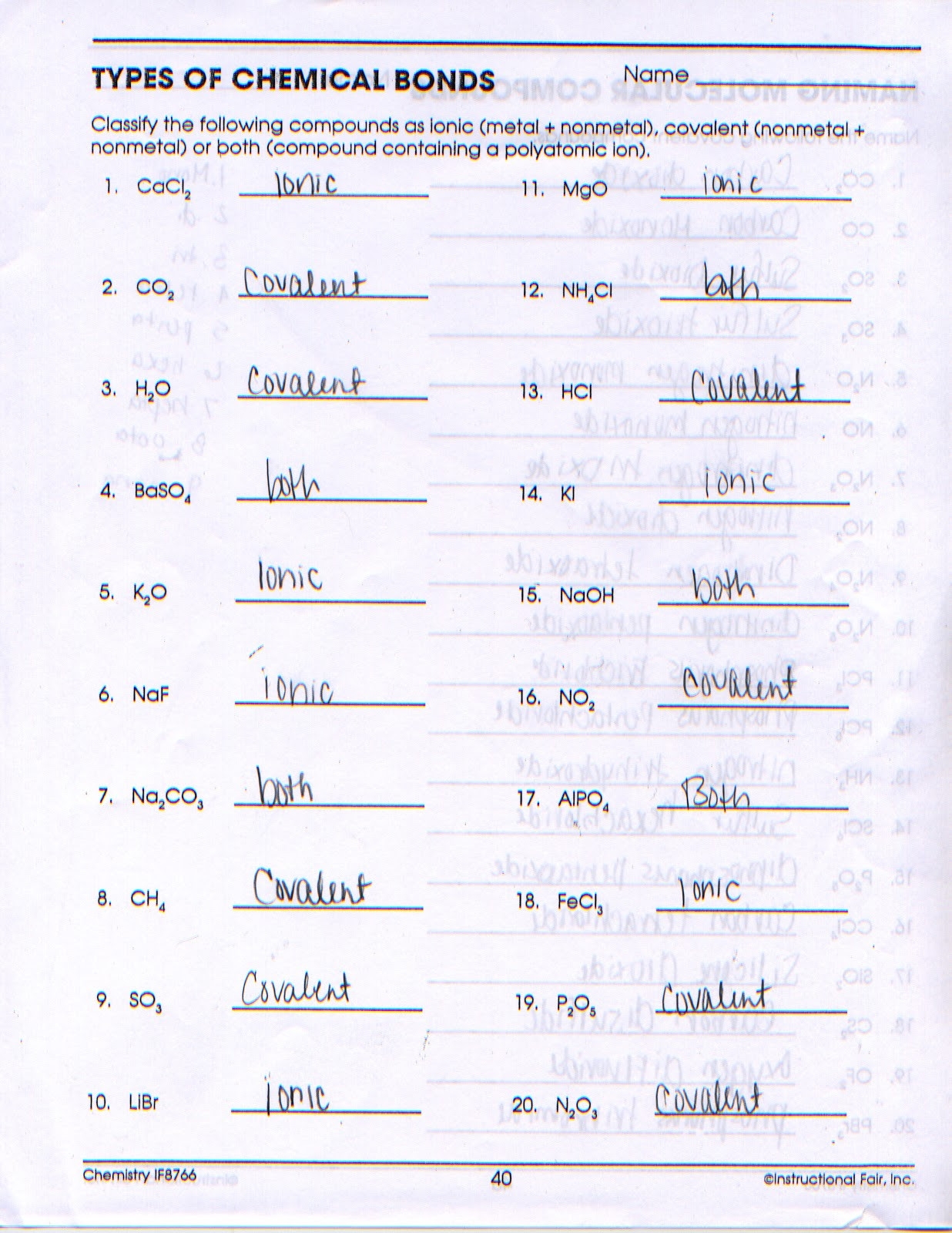Covalent bonding is a type of chemical bonding that involves the sharing of electron pairs between atoms. This type of bonding is commonly found in molecules such as water, carbon dioxide, and methane. In covalent bonding, atoms share electrons in order to achieve a stable electron configuration. This worksheet will help you understand the concept of covalent bonding and practice identifying covalent compounds.
Understanding the concept of covalent bonding is essential in chemistry. This type of bonding occurs when two non-metal atoms share electrons to achieve a stable electron configuration. The shared electrons are known as bonding pairs, and they help hold the atoms together. Covalent bonds are strong and stable, making them essential in the formation of molecules.
When working on a covalent bonding worksheet, you may encounter questions that require you to identify the type of bond in a given compound, draw Lewis structures, or determine the number of shared electrons in a molecule. These exercises help reinforce your understanding of covalent bonding and improve your problem-solving skills in chemistry.
One common exercise in a covalent bonding worksheet is to draw Lewis structures for different molecules. This helps you visualize the arrangement of atoms and electrons in a molecule, as well as determine the type of bond present. By practicing drawing Lewis structures, you can become more proficient in identifying covalent compounds and understanding their properties.
Another important concept in covalent bonding is the idea of electronegativity. Electronegativity is a measure of an atom’s ability to attract electrons in a chemical bond. In covalent bonds, atoms with similar electronegativities tend to share electrons equally, resulting in a nonpolar covalent bond. On the other hand, atoms with different electronegativities share electrons unequally, leading to a polar covalent bond.
In conclusion, working on a covalent bonding worksheet is a valuable exercise that helps reinforce your understanding of covalent compounds and their properties. By practicing drawing Lewis structures, identifying bond types, and understanding electronegativity, you can improve your knowledge of covalent bonding and enhance your problem-solving skills in chemistry.
